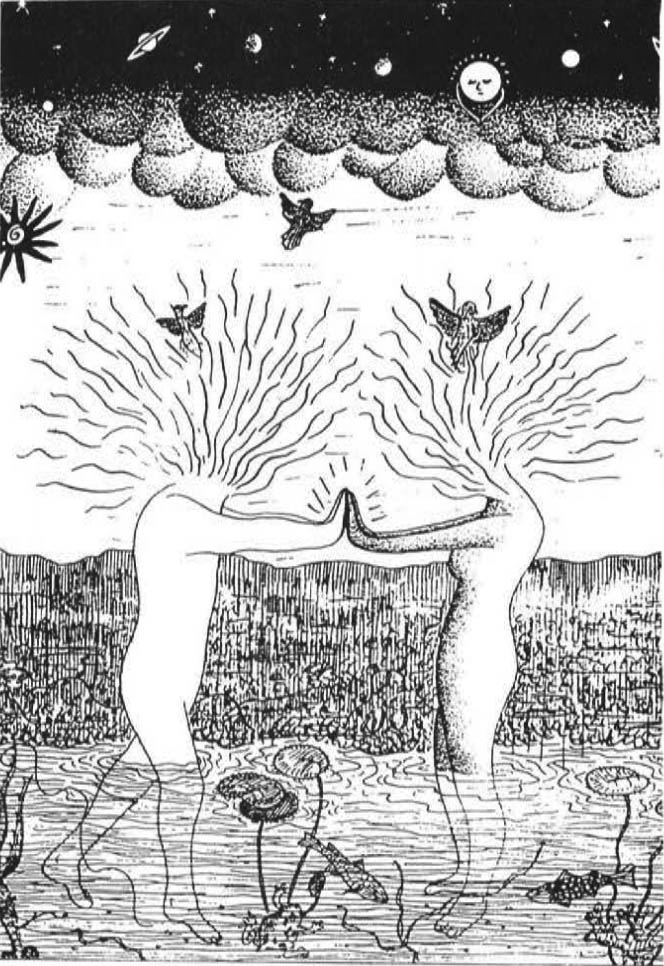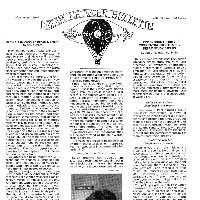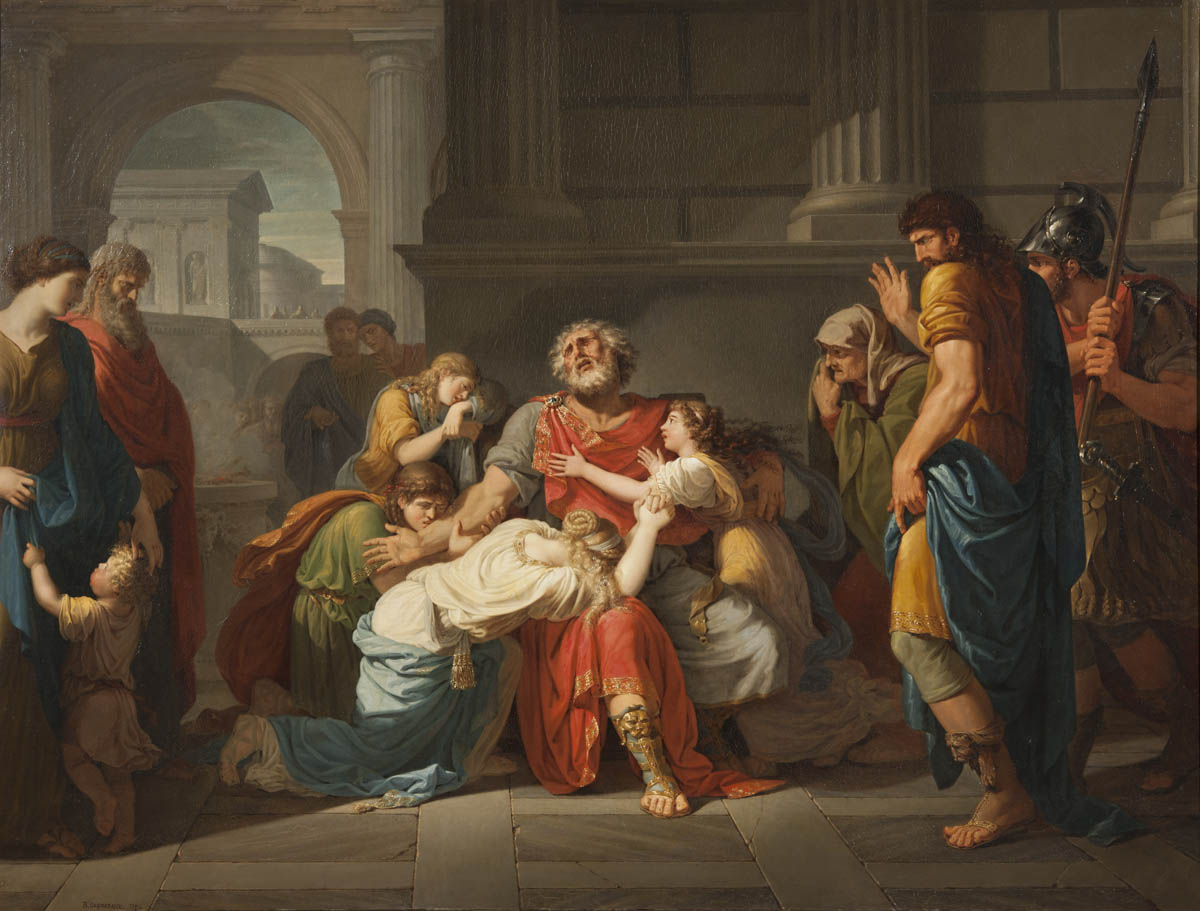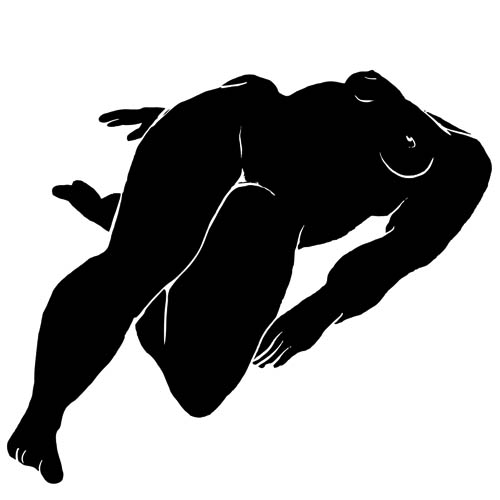
"Freud is right," I said to myself, somewhat incredulous as the psychology professor explained the id and the libido. "Freud is right," I said again and shook my head. It was 1980 and I was a psychology major at Drake University listening to a lecture on Freud's theory of the id, ego, superego and the libido. The instructor had outlined Freud's theory that the id-or the vast unconscious within one's psyche-was the source of the libido, the sexually based instinctual energy that fueled much of motivation and behavior.
At that moment, I felt Freud had illuminated an interesting aspect of my lucid dreaming-that the feeling of extraordinary energy when conscious in the dream. I reasoned that-if the dream state was located in the id or unconscious-then, when lucid, one was exploring the unconscious with one's conscious awareness. Freud's theory would seemingly predict that a dreaming person, in their id or unconscious, would definitely experience the libido energy. I thought back to my first five years of lucid dreaming experiences and recalled the incredible surge of energy that occurs when lucid-that deep, intense, sometimes ecstatic, often sexual, energy streaming through my awareness. I could only conclude that Freud might be on to something.
But what were others experiencing in their lucid dreams? Was this ecstatic energy common in lucid dreams? Or was it just me, a 20 year old junior in college with possible raging hormones and a penchant for lucid dreaming?
"Orgasm is a natural part of lucid dreaming," proclaimed Dr. Patricia Garfield in her fascinating book Pathway to Ecstasy: The Way of the Dream Mandala, first published in 1979. Drawing upon many of her lucid dream experiences with bold frankness and a penetrating eye for detail, she went on to write, "in fully two thirds of my lucid dreams, I feel the flow of sexual energy; this arousal culminates in an orgasmic burst on about half of those occasions."
Garfield's book unabashedly acknowledged a common denominator in lucid dreaming; namely that the shift from dreaming to conscious or lucid dreaming was normally accompanied by a special, energetic, inner feeling which often was ultimately directed by the dreamer to sexual expression. Lucid dreamers would often write, "I know I am dreaming. I want to have fun. Feeling amorous, I look down an empty street and desire a man. Suddenly I see a man..."
What else might explain this desire for sexual expression? In lucid dreams, the senses are often very acute and vivid. Touching often seems hypersensitive. Coupled with a feeling of energy and freedom, this tactile intensity may encourage further sensuousness or sex. Also in lucid dreams, one is aware of safety, ensconced in a creation of ones own making. Directing the action to pleasurable activities is easily achieved and often free from waking or moralistic concerns. One lucid dreamer's fantasy: "I realized I was dreaming and stepped into the school room. I saw there were a few women there. Feeling amorous, I decided to announce that I wanted to see more attractive women when I re-entered the room. I stepped out into the hallway, shut the door and waited. I reopened the door with a definite feeling of expectation. A line of attractive nude women stood looking back at me. It was amazing!"
Of course in many lucid dreams, there is no overt or apparent covert sexual action or imagery or only a part may be directed to sexual expression. The majority of the lucid dream may be directed to exploring the lucid dream state: flying, transforming dream object or events, talking to dream characters, or predetermined goals of the lucid dreamer.
Experienced lucid dreamers learn to contravene the sexual component for two basic reasons. They learn that excessive emotions can terminate a lucid dream. Therefore intense sexual feelings may cause lucidity to end, much like overloading -a circuit breaker. An example illustrates this: "I pulled her close and could feel her breasts as I reached under her sweater. But then the emotional intensity was building and I could tell that the lucid dream was about to end."
Second, a lucid dreamer may have a particular goal in mind, actively choosing to ignore a sexual situation. One lucid dreamer wrote, "I brush against one of the women as I stand up, then I realize that this is a lucid dream! I look at my hands for a moment to stabilize things. As I look up again, one of the women is now wearing only underwear. I ignore her because I have a desire to experiment. I see the wall in front of me with old wallpaper and decide to walk through it and experience that as I do so, I have a funny perception, kind of a half second of 'brown vision,' which I assume is my visualization of the wall internally."
Flying, Sex and Ecstasy
Most experienced lucid dreamers agree that some degree of sexual activity occurs in many lucid dreams. An informal survey found that their favorite activity when lucid was flying; sexual expression was their second.
Freud drew a linkage to flying as a dream symbol for sexual expression in his book The Interpretation of Dreams. Reflecting upon childhood 'romping' and the giddy excitement of being swung about by adults, Freud concluded, "Not infrequently in these motion games, innocuous in themselves, sexual feelings will be aroused". Is there a connection between flying and sex in lucid dreams? It may be an association with ecstasy- "a state of exalted delight in which normal understanding is felt to be surpassed" -or from the Greek, ek-stasis, "to displace, drive out one's senses". Lucid dreams are in some sense ecstatic; they jar us out of "stasis' or standstill. They shift our consciousness. They force us into a new awareness that provides the energy to express freedom, intensity and joy in a symbolic way, such as flying, sexual union or transcendental experiences.
I found that Patricia Garfield reached a similar conclusion, "...we are stimulating an area of the brain or a chain of responses that is associated with ecstatic states of all sorts. Sensations of flying, sexual heights, acute pleasurable awareness, and a sense of oneness are all natural outcomes of a prolonged lucid dream." This sense of ecstasy may generalize to a number of diverse but highly pleasurable dream behaviors or actions, linked through inner associational processes.
Symbolism in Lucid Dreams
Although the lucid dreamer's sexual activities are normally consciously directed by their conscious intent, other parts of the dream (the setting, the atmosphere, the action of the dream characters) are not typically consciously directed but simply accepted by the lucid dreamer. This suggests that the symbolic function of a dream continues in the background, while accommodating the consciously directed activities of the lucid dreamer. This lucid dreamers' account may express this:
I am wearing a long, red slip dress over a white top ... and marveling at such a wonderful dream scene. I still want sex. I go through the house looking for someone. I even go down to the basement... I see a light coming from the furnace area.
The red dress may symbolically express, fashion-wise, this lucid dreamer's sexual urge, though it wasn't consciously chosen. Similarly, the light coming from the furnace area may suggest the dreamer's heat, fire, or passion. The dream continues:
I look out the front door and see R ... I know it is a dream version of R so it's okay to have sex with him ... I tell him let's go down there, as I point to the brook area and the tall reeds ... I lay floating supported by the reeds ... I hope Dad can't see me out the window ... I remind myself that I'm dreaming and it doesn't matter who sees. R may not even be there anymore but I experience an orgasm anyway.
The setting of tall reeds and brook may symbolically reflect the sexual action.
In many lucid dream accounts, one reads of the dreamer wrestling with where to have their sexual activity: in the open, in the closet, with no one present, with many others present, etc., all of which may have symbolic significance. One lucid dreamer felt his experience shed 'light' on his inner feelings:
I was lucid, and seemed to be in an attic with lots of boxes and chests around. For some reason the lighting was very dim, and shadowy. I saw a woman there, and knowing this was a dream, decided to have sex with her. In the next moment. her clothing was gone and she was looking towards me as she sat on the floor with her legs open. As I moved closer. I may have been thinking about the darkness for a second and then the oddest thing happened, a shaft of light from above shone down directly upon her vagina. It was like a theatrical stage light had suddenly turned on. Boom! It totally lit up with a brilliant white light! I laughed with delight.
The dreamer felt the scene in the attic may have reflected his thinking about issues of sex and spirituality.
Lucidity, Sex and Physiology
Garfield also hints that there may possibly be a physiological component in lucid dreaming and sex. Later, research reported by Dr. Stephen LaBerge in his book Lucid Dreaming, states that "lucid dreaming occurs during a highly activated phase of REM sleep, associated, as a result, with increased vaginal blood flow or penile erections." While this is an interesting point, one can only wonder if the physiological event is being driven by the dream cognitions or if the dream cognitions are an artifact of physiological activities.
In a separate 1983 sleep laboratory study, LaBerge asked a female lucid dreamer to signal through rapid eye-movements that she was lucid dreaming, and then signal when she was nearing orgasm in the lucid dream. The physiological measures of heightened respiration, and vaginal muscle activity and pulse amplitude matched her lucid dream signaling. This indicated that the sexual dream content was reflected in physiological changes. In many ways, the experience was 'real,' mentally and physiologically. This study suggests to me that the dream cognitions drive the physiology.
Twenty-six years ago when I first began to dream consciously or lucidly at age 16, my very first lucid dreams did not have sexual elements in them. What they had, however, was an extraordinary sense of near ecstasy -- a deep swelling sense of energy, feelings of complete and utter freedom, and an astounding visual and mental clarity. These ecstatic feelings were often most acute when flying.
When talking with other lucid dreamers about their first lucid dream, no one has ever mentioned sex in their first lucid dream. However, many have mentioned a feeling of near ecstasy and joy, often accompanied by flying. At some later point, most lucid dreamers learn they can direct the energy of the dream towards sexual expressions.
These points may suggest that the energy felt in a lucid dream is an experience of a basic or universal creative energy with the sexual component being one part, which we learn through association or conscious desire to pursue. In a similar vein, Carl G. Jung broke with Freud's view of the libido as primarily sexual and came to view the libido as a psychic energy, an expression of the "intensity of the psychic process."
Id, Ego, Libido, Lucidity: Why does it matter?
One hundred years ago Freud made an attempt to conceptualize the Psyche, how it was composed, how it functioned or dysfunctioned. He likened the conscious to the tip of an iceberg supported by a massive unconscious underneath. Dreams were very important in this schema, because dreams expressed symbolically the activity of the unconscious and shed light on one's motivations, perceptions and behaviors.
One hundred years later, what do we really understand of the Psyche and the role of dreams in it? Robert Bosnak's book, Tracks in the Wilderness of Dreaming, explored this area. He strenuously questioned "Who is the dreamer?" in his attempt to understand the fantastic, awesome, incredible creativity of dreams and "who" was behind them. Similarly I ask "Where is the dreamer? Where do we place the dreamer in our conception of the psyche?" Moreover, "If the dreamer is in the Unconscious, then where is the lucid dreamer?" And finally, "If the lucid dreamer is aware in the Unconscious, why do we not use lucid dreamers to begin to map out the characteristics of the Unconscious-the characteristics of the Psyche?"
The commonality of experience of lucid dreamers as they consciously act in the dreaming environment suggests that there may be a framework, a set of principles, of unconscious processes available in dreaming to be theorized and tested. If these principles could be explored and identified, then we could move beyond general conceptualizations and more clearly define the reality of the dream state and perhaps, the unconscious.
As minister and dreamworker Jeremy Taylor has said many times, "Dreams come to enhance our health and wholeness." All dreams, including lucid ones, are an opening to our wholeness. Let's find the dreamer. Let's claim our wholeness.
Notes:
Pathway to Ecstasy: The Way of the Dream Mandala by Patricia Garfield, 1979 p. 44
The Interpretation of Dreams (a new translation by Joyce Crick) by Sigmund Freud, 1999 p. 209
Garfield, p. 44.
Lucid Dreaming by Stephen LaBerge, 1985 p. 142.
The Basic Writings of C.G. Jung by Violet S. de Laszlo, 1993 p. 332.
Tracks in the Wilderness of Dreaming by Robert Bosnak, 1997










